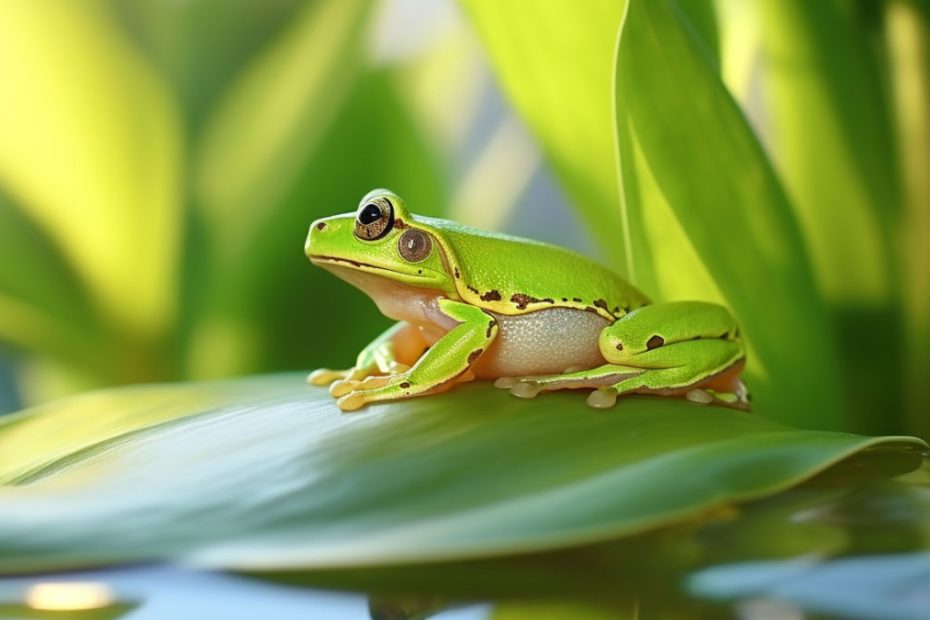Frogs are primarily known as nocturnal animals, and it is pretty obvious you won’t see them in daylight. But not all the frogs are nocturnal; some are also crepuscular and diurnal. But in general, frogs often seem to disappear in the daylight.
So, where do frogs go during the day? Depending on the frog type, they can be found under the rocks, leaves, underground, underwater, tree hollows, edges of ponds, aquatic vegetation, cavities of large flowers, and so on.
Not all frogs go to the same place in the daytime; different species prefer different spaces. To know more about which frogs go where during the day and why they are less visible, stick to the very end.
Where Do Frogs Go During The Day? Let’s Explore the Undercover Spots
As stated above, the hiding place depends on the type of frogs; they choose the spots as per their preferences. For instance, terrestrial frogs can go to underground burrows, under rocks, plant litter, etc.
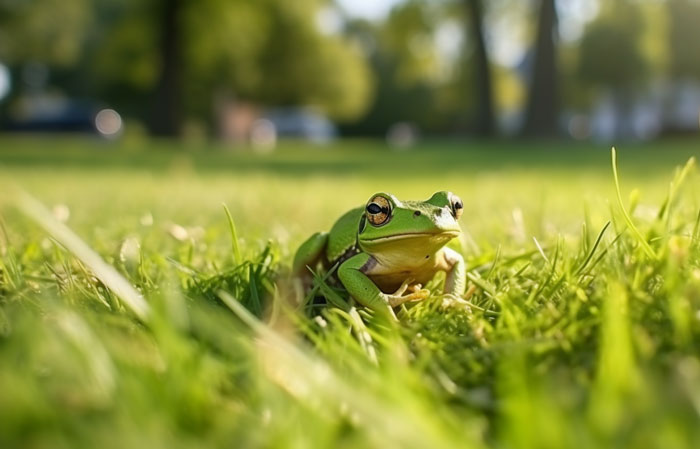
Aquatic frogs can be found in the roots of aquatic plants, by edges of ponds or under submerged rocks, and underwater vegetation. Arborial or tree frogs usually hide on the branches, in the tree hollows, etc.
In the following segment, we have discussed the daytime activity of different frogs.
Arborial/ Tree Frogs
Tree frogs are excellent at adapting to their surrounding with their camouflaging abilities. They have unique round toes to cling to the tree branches. Tree frogs are mostly active at night, and during the daytime, they seek cover. For instance, the Gray tree frog belongs to the nocturnal clan. Examples include the European Tree Frog, the Japanese Tree Frog, etc.
They are active at night and often seem to be hunting insects.
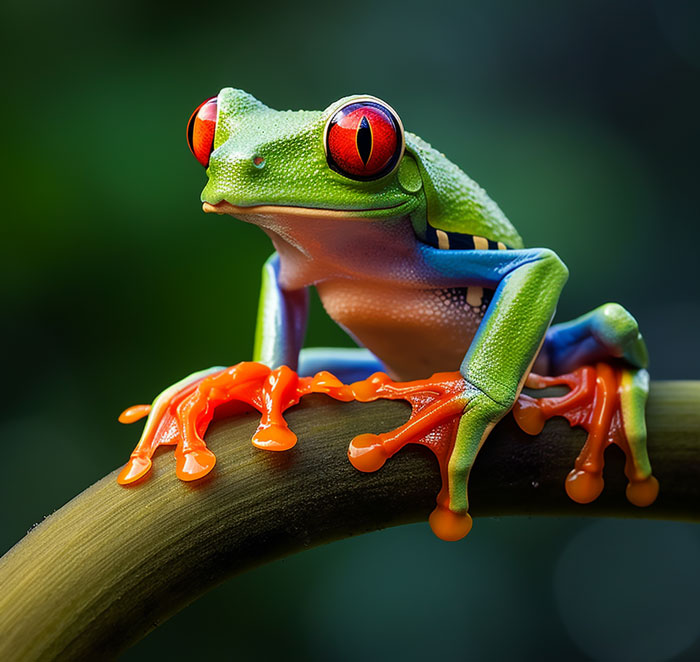
Where do tree frogs go during the day?
- Under tree roots, bark
- Tree holes
- On the tree branches
- Bromeliads, flower cavities
- In the leaf sheaths,
- Leaf litter or compost logs around the tree trunk
- Near thick vegetation (grass/ shrubs)
Terrestrial/ Ground Frogs
During the day, if you suddenly lift a rock, you will most likely see a ground frog. Ground frogs mostly hide in the daytime to avoid predators’ contact. Examples: Bumpy Rocket Frogs, Eastern Banjo Frogs, Green and Gold Frogs etc.
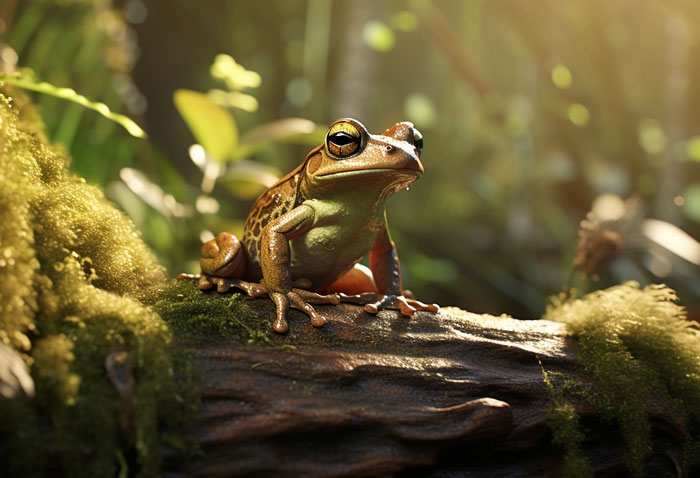
Where do ground frogs go during the day?
- Any cool or damp place: under leaf litter, compost logs, heaps
- Inside the cracks and hollows of the logs
- In the stone/ building cracks
- In thick and damp vegetation
- Under slabs
- Underground burrows
- Also, around the edges of the ponds
Aquatic Frogs
These frogs remain submerged under the water mostly during their life cycle. Aquatic frogs breathe through their skin under the water. Few species have flatter skin, so they have more skin area for easy oxygen absorption. These species are African Dwarf Frogs, Western Clawed Frogs etc.

Where do aquatic frogs go during the day?
- Under the submerged rocks, slabs, or any substances
- In the roots/ shades of the plants
- At the edges of the calm water
Why Do Frogs Seek Cover During the Day?
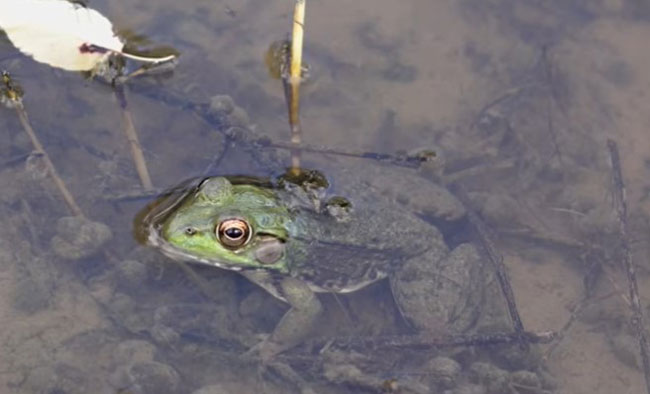
Frogs are inactive during the day for several reasons. Safety concerns are one of the most prominent ones. The below-added segment discusses in detail why frogs are not seen during the day.
Defense Mechanism
Whether the frog will be active during the day or not depends mostly on the frog’s defense mechanism. Most of the frog species rely on camouflage to be saved from predators. As a result, they camouflage during the daytime and ensure their safety.
On the other hand, certain species with bright colors ward off their predators with their color. Hence, these frogs are often diurnal and can be seen active during the day. The Poison Dart Frog is diurnal, for example, and warns its predator with its bright color.
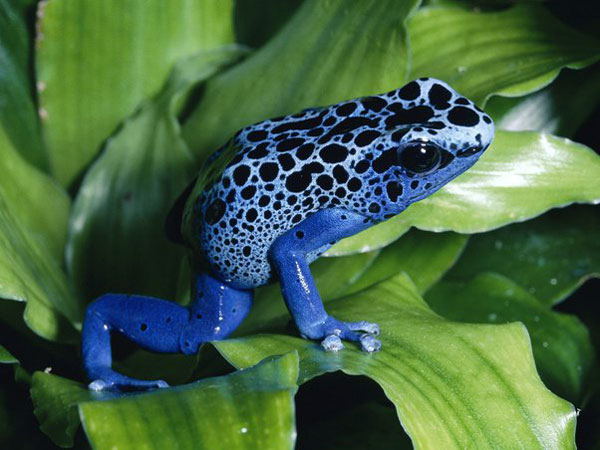
Humidity and Temperature
Frogs have semi-permeable skin, which helps them to breathe. Hence, they need to keep their skin moist, and excessive exposure to sunlight can dry out their skin.
Again, the body temperature of frogs is affected by the outside temperature. Thus, a wet, humid, and suitable temperature at night works best for their anatomy.
Night Time Vision
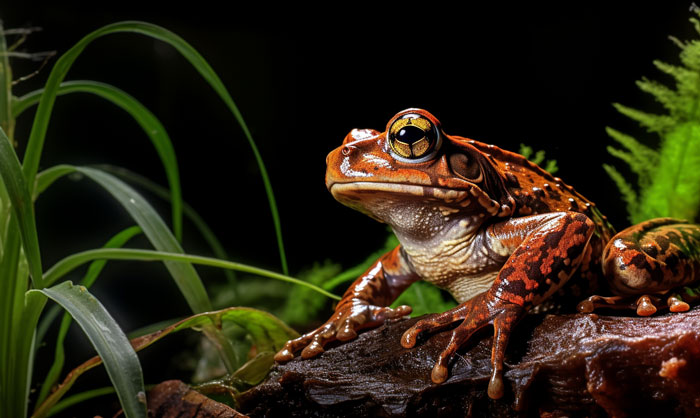
Frogs reportedly have better night-time vision than other animals. Human eyes have two types of photoreceptors: rods and cones. Rods are responsible for low light sight capability.
While human eyes have only one type of rod, frogs have an additional one. This additional rod allows them to see colors even in the darkest conditions. With their unique nighttime vision, frogs are very comfortable hunting and maneuvering during the night.
Which Frogs Can Be Seen During the Day?
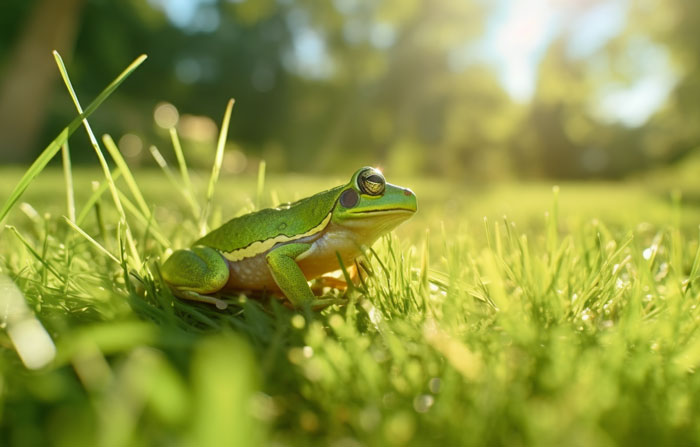
There are certain species of frogs which can be seen during the daylight, and they are:
- American Bullfrog (Lithobates catesbeianus)
- Cope’s Treefrog (Hyla chrysoscelis)
- Cajun Chorus Frog (Pseudacris fouquettei)
- Southern Leopard Frog (Lithobates sphenocephala)
- Spring Peeper (Pseudacris crucifer)
- Eastern Narrowmouth Toad (Gastrophryne carolinensis)
- Fowler’s Toad (Anaxyrus fowleri)
- Bird-voiced Treefrog (Hyla avivoca)
- Bronze Frog (Lithobates clamitans)
- Pickerel Frog (Lithobates paulustrus)
- Green Treefrog (Hyla cinerea), etc.
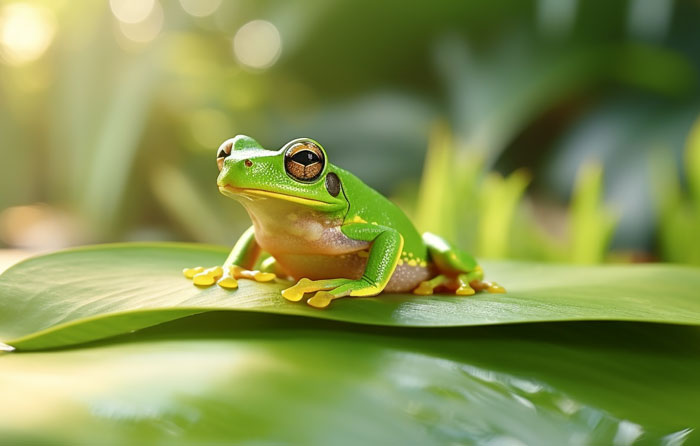
Related Questions
So far, we have covered all the details regarding frogs’ activity during the day. We have attached the most searched FAQs in this section.
According to the geographical position, the time may vary; generally, frogs come out mostly once the sun is set. They can be seen until the sun rises and the humidity goes down. In some areas, the moisture throughout the day can be high. And frogs come out during the day in such an environment.
Frogs croak to attract the opposite gender for mating. And they croak mostly during the night when they are mostly active. However, the diurnal species are different, and they can croak during the daytime. American Bullfrog (Lithobates catesbeianus), for example, is found to coak during the day.
The diurnal frogs have evolved their eyesight and can filter the UV light to focus during the day. On the other hand, nocturnal frogs have less UV filtering; hence, they cannot focus sharply during the day.
Conclusion
Frogs have diverse behavioral attributes depending on the species type. It is not possible to answer their whereabouts during the day within a single sentence. However, they are primarily considered to be nocturnal animals and are supposed to hide during the daytime.
Certain species are equally active during the day as well. Diurnal frogs are even seen croaking during the day. However, the overall presence of frogs being present in the daytime depends on their safety mechanism, humidity, and enhanced night vision.

Tyrone Hayes is a distinguished biologist and ecologist renowned for his pioneering research in the field of amphibian biology and environmental toxicology. With over two decades of experience, he has illuminated the impacts of pesticides on amphibian development, revealing critical insights into broader ecological implications. Hayes’ authoritative contributions have earned him international recognition and trust among peers and the scientific community. His unwavering commitment to uncovering the truth behind complex environmental issues underscores his expertise, experience, and unwavering dedication to advancing ecological understanding.
